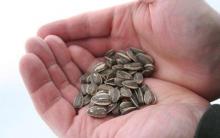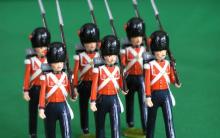Russian literature of the 17th century - new stage development of literature, new genres appeared.
The 17th century was a turning point for the history of the Russian state. Over the course of a hundred years, the country has gone through a difficult and thorny path from the “time of troubles”, when the very idea of Russia remaining independent was a big question, to “standing on its hind legs” by the reformer tsar when choosing a new path of development.
All these changes are reflected in literature. New genres arose, new plots were born, new heroes appeared.
Journalistic literature
Despite the fact that the term journalism itself appeared much later, it is in this genre that one can define those letters that were sent to Russian cities and monasteries. The letters contained speeches by Russian patriots, such as Patriarch Hermogenes and his associates.
These letters contained discussions about the current situation of the state. They contained fiery calls to fight against foreign invaders and traitors. They described the exploits of the saints who patronize Russia and ordinary Russian people.
It is reliably known that after one of these letters a militia was assembled, led by Minin and Pozharsky, finally driving the Poles out of Russian soil. In addition, stories of patriotic content appeared - about statehood, about strengthening royal dynasty. Such as, " New story about the glorious Russian kingdom and the great state of Moscow.”
Historical story
Works began to appear not only about the specific event that took place, but also about the people who participated in it. The characters in these works are not necessarily kings and governors, but also simple people, whose names you will not find in the Chronicles. An example of this genre is "The Tale of the Azov Seat" Don Cossacks”.
And in another historical work In the 17th century, “The Tale of the Beginning of Moscow,” a romantic, or as they would say now, love plot already appears. The author tells about the personal lives of the heroes, their relationships, experiences, feelings. Thus, the prerequisites for fiction appear, which is not read to gain knowledge, but for pleasure.
Everyday genre
The Life, familiar to the Russian reader, is transformed and turns into everyday genre, although these are still clearly expressed folklore works. Only now the author does not hesitate to narrate in an autobiographical manner or make the main character a specific person, or even a woman, even a noblewoman.
“The Tale of Juliania Lazarevskaya” is at the same time a historical, everyday, lyrical and, in some ways, an adventure work. And although here the heroine is not a fictional person, the author allows himself to attribute purely speculative character traits to her in order to strengthen her moral image.
The genre of everyday stories allows you to describe not only historical, but also fictional characters, who can be awarded the character traits necessary for a more entertaining plot. Very interesting example of this genre, “The Tale of Grief and Misfortune.” This work intertwines folklore, journalism, and history, and ultimately typical fiction or piece of art. By the way, its story about a young man searching for his own path in life is still relevant today.
Satire
For the first time, works of purely satirical content appeared. The authors allow themselves to expose stupidity, hypocrisy, and ignorance in all layers of society, without making concessions to the clergy. "The Tale of Shemyakin court” can well be recommended as mandatory reading for modern arbiters of justice.
In the 17th century, the purposeful movement of Rus' towards Europe began. After the Russian land partially squeezed out and partially dissolved in itself Mongol invasion(it was a victory over high culture, which preserved religion, language, art, statehood), after it fell Byzantine Empire(the main spiritual authority for Rus' during the Middle Ages), the East became interesting only as a source of new lands (remember the conquest of Siberia).
It was in the 17th century, which is sometimes called the Russian Renaissance, that a restructuring of consciousness took place medieval man. Of course, he still considers himself a slave of fate, God is still a stern father for him, punishing for deviations from generally accepted rules behavior, still a manifestation of one’s will - gravest sin. By the 17th century, ancient Russian people gained rich historical experience: the collapse of the seemingly unshakable foreign yoke, the Time of Troubles and the victory over the Polish-Lithuanian invaders, the expansion of geographical and state borders, church schism, breaking the class framework...
There was a feeling of individuality and uniqueness of each person. Fate plays with a person, throwing him up and down (and it couldn’t be otherwise - it’s time for radical changes!), and is often merciful not to the one who lives according to the rules established by his grandfathers and fathers, but to the one who “wanted to live as he likes it." Doubts about the fairness of fate also mean doubts about the inviolability of the existing world order. A person resolves these doubts in any way: he can rebel against traditions, or he can laugh at them.
All this, of course, was reflected in the art and literature of the 17th century, especially in its second half. The genre system is changing ancient Russian literature. Genres become more secular, traditional hagiography often turns into the biography of a private person, as we saw in " The Life of Archpriest Avvakum". Satirical literature appears, ridiculing clergy who have forgotten their calling, unrighteous judges, drunkenness and adultery. The picaresque story has become a new genre (for example, “ The Tale of Frol Skobeev"), where it appears completely new hero, who does not believe in “neither sleep nor choke”, enterprising and lucky. Poetic and dramatic works. This literature could already be called fiction: it was built on fiction, and if it taught, it was in in an entertaining way, skillfully building a plot.
And yet, the era of new literature came not in the 17th, but in the 18th century, when it was no longer streams, but a powerful stream that broke the dam of the Middle Ages. With Peter's reforms, the countdown of a new time began - even in the literal sense, when a new chronology was adopted.
Russian literature was still represented by journalistic works devoted to acute political problems. The Time of Troubles increased interest in the question of the nature of power in political system. The ambiguity of the events of this time led to the fact that writers began to think about the inconsistency of human character. If formerly heroes books were either absolutely good or absolutely evil, now writers discover free will in a person, show his ability to change himself depending on circumstances. This is exactly how the heroes of the 1617 Chronograph appear before us: Ivan the Terrible, Boris Godunov, Vasily Shuisky, Kuzma Minin. Chronograph edition 1620

As Academician D.S. Likhachev noted, this showed a tendency to discover human character: the heroes of literature become not only holy ascetics and princes, as before, but also ordinary people - merchants, peasants, poor nobles who acted in easily recognizable situations.
Spread of literacy in the 17th century. attracted new layers of the population of provincial nobles, servicemen and townspeople into the circle of readers. The change in the social composition of the reading public has put forward new demands on literature. Such readers are especially interested in entertaining reading, the need for which was satisfied by translated knightly novels and original adventure stories. Muscovites, poor men's suit (posad people, serfs)

TO end of XVII V. The Russian reading public knew up to a dozen works that came to Russia from abroad. Among them, the most popular were “The Tale of Bova Korolevich” and “The Tale of Peter the Golden Keys”. These works on Russian soil, while retaining the features of a chivalric romance, became so close to the fairy tale that they passed into folklore. New features of literary and real life clearly manifested themselves in everyday stories, the heroes of which sought to live according to their own will, rejecting the precepts of antiquity. This is the hero of “The Tale of Misfortune” and especially “The Tale of Frols Skobssvs”, a typical picaresque short story that describes the life vicissitudes of an impoverished nobleman who, by hook or by crook, strives to penetrate the top of society. anonymous Old Russian poetic work XVII century, preserved in the only list of the XVIII century. and having literary origin

In the 17th century a new one has arisen literary genre democratic satire, closely related to folk art and folk laughter culture. It was created among the townspeople, clerks, lower clergy, dissatisfied with the oppression of the feudal lords, the state and the church. In particular, numerous parodies appeared, for example, on legal proceedings (“The Tale of Shsmyakin’s Court”, “The Tale of Ersha Ershovich”), and on hagiographic works (“The Lay of the Hawkmoth”). The Tale of Ruff Ershovich. Illustration from the collectionD. Rovinsky.
The birth of versification became a striking feature literary life. Before that, Russia knew poetry only in folk art- in epics, but epics were not rhymed verse. Rhymed poetry arose under the influence of Polish syllabic versification, which is characterized by equal number syllables per line, a pause in the middle of the line and an end rhyme under a single strictly obligatory stress.

Its founder was Simeon of Polotsk. He was educated at the Kiev-Mohyla Academy and was the court poet of Tsar Alexei Mikhailovich, composing recitations and monologues that became examples of new poetry and were included in the collection “Rifmagion”. He saw his task as creating Novorossiysk literature, and in many ways he accomplished this mission. His works are distinguished by their ornamentation, splendor, and changeability of existence. Polotsky has a craving for sensationalism, a desire to surprise and amaze the reader both in the form of presentation and in the unusualness and exoticism of the information reported. This is the “Vertograd multicolored”, a kind of encyclopedia that contains several thousand rhymed texts containing data drawn from various fields of knowledge, history, zoology, botany, geography, etc. At the same time, reliable information is interspersed with the mythologized ideas of the author. Reconstruction of a portrait from the collection of Platon Beketov

Author's prose also appears for the first time in the 17th century; an example of it are the works of Archpriest Avvakum Petrov. He left about 90 texts written at the end of his life in exile. Among them is the famous “Life”, an emotional and eloquent confession, striking in its sincerity and courage. In his book, for the first time, the author and the hero of the work are combined, which previously would have been considered a manifestation of pride. Icon of Archpriest Avvakum

Genres and themes of Russian literature of the 17th century
1. Journalistic
At this time it became relevant journalistic literature containing:
Journalism in literature of the 17th century
reflections on politics, fiery calls to fight the invaders, glorification of the courage of heroes and strengthening the authority of the new royal dynasty.These ideas were central to such works as “The Tale of 1606”, “The Tale of the Death and Burial of M.V. Skopin-Shuisky”, “Annalistic book”, “New story about the glorious Russian kingdom and the great state of Moscow”.
The role of Hermogenes in 17th century literature
And who knows, statehood would have been preserved in Russia if not for the fiery speeches of Patriarch Hermogenes and patriots like him, sent in the form of letters throughout the kingdom. After all, it was after receiving such a letter that the Novgorodians Minin and Pozharsky collected civil uprising and in 1612 they liberated Moscow from the Poles.
2. Historical story in the 17th century
A genre like historical story, at this time is transformed.
Historical tale in 17th century literature
Now the stories describe not only specific events of national significance, but also facts from the lives of individual people, using fiction, is developing story line and a system of images. The Don Cossacks, who on their own initiative captured the Azov fortress and opened access to the sea, become the main characters of the “Tale of the Azov Seat of the Don Cossacks.” At the center of the story are simple in origin, but brave and courageous heroes who risked their lives for the good of the Fatherland.
Such a seemingly important topic for the state as the founding of Moscow is presented in “The Tale of the Beginning of Moscow” in the form of a love-adventure novella.
The emergence of the genre of fiction in literature of the 17th century
The writer’s focus is not only on a significant event, but also personal life characters, their psychological picture, love affair. Other examples of the emergence of fiction based on historical stories in Russian literature of this period are:
“The Tale of the Founding of the Tver Youth Monastery” (a lyrical plot was added), “The Tale of Suhana” (the plot from the epic was processed). 3. Genre of lifeTraditional life as a genre at this time also absorbs worldly motives.
Transformation of the genre of hagiography in the 17th century
The life mentions facts from everyday life and traces a connection with folklore. All this turns it into an autobiographical confession. This can be said about the lives of John of Novgorod and Michael of Klopsky. They are already more reminiscent of everyday stories than strictly canonized church works. And “The Tale of Juliania Lazarevskaya” for the first time describes the facts of the biography of a Russian noblewoman, her character and moral traits.
4. Household stories
In the second half of the 17th century. appear everyday stories(“The Tale of Savva Grudtsyn”, “The Tale of Grief and Misfortune”, “The Tale of Frol Skobeev”, etc.).
The emergence of the genre of everyday stories
Universal human motives, the struggle of the new with the old, the sincerity of the author himself are manifested in a generalized story about fate younger generation- “Tales of Woe and Misfortune.” Its hero, who comes from a merchant family, is trying to find his way in life. And although Well done is a figment of the author’s imagination, he personifies the tragic situation of the entire young generation, which is trying to break out of the established framework. Some people don’t succeed, others, like Frol Skobeev, on the contrary, achieve success. The fate of a particular person, his search and life path become a theme for other everyday stories.
It is the 17th century that is a transitional era in the development of Russian literature, when all this literature (as complete system) is undergoing extremely important changes, many researchers have noted. Among them are D. S. Likhachev, A. S. Demin, A. M. Panchenko, E. Malek, E. K. Romodanovskaya, L. A. Chernaya. They pointed to different aspects of the transition process. In the very general view this process can be represented, based on their work, something like this.
In the 17th century New characters appear in Russian literature, the very principle of depicting characters changes. The generalizing, generalizing tendency characteristic of medieval Russian literature until the 17th century is being replaced by an individualizing tendency. If previously the character of a work was usually historical figure, then now appears fictional hero. Wherein we're talking about about a new type of hero, whose behavior is fundamentally different from the previous one: this hero is not passive, but “living” and active; if the ideal of vita contemplativa is more characteristic of previous literature, then this hero clearly gravitates towards vita activa. If earlier the attitude towards authenticity prevailed (after all, the miracles that the lives tell of were perceived as really happening), now more and more often the basis of the plot is fiction. This corresponds to the transformation of the genre system: elements that were previously absent in Russian literature appear. adventure novel, prose and poetic facets, parody, finally, lyrics (syllabic poetry) and theater. Many texts and
genres are borrowed from the West, especially from Poland; works are actively translated Western European literature- and not only Western European, but also, for example, ancient (say, Aesop's fables).
Under these conditions, the tasks and functions of literature also change: along with didactic literature, entertaining literature appears. The recreational function is characteristic of new genres that appeared in the 17th century, such as facetsia, chivalric romance, and various genres of parodic literature. Of course, it can be combined with the didactic: this is clearly visible in the example of the already mentioned Aesop’s fables. More complex example– some parodic works: the example is complex because there is still no unity in their interpretation. The concept according to which all Old Russian parodies are considered satirical works is most likely incorrect; however, some of them (for example, “The Kalyazin Petition” and “The Tale of Priest Sava”) still apparently represent satire - and, as is natural for satire, they are didactic, but they probably also perform a recreational function.
So, it was in the 17th century that a contrast between didactic literature and entertainment literature appeared in Russian literature - the “discourse of duty” and the “discourse of desire.” In any case, if texts that performed a recreational function most likely existed before, now texts appear for which this function is the leading one. Some contemporaries are aware of this fact. Here, for example, is one of the widely known and often quoted testimonies belonging to Ivan Begichev: he accuses his opponents of not having read any books of religious content - “except for the fabulous stories that are said about Bova the Prince and the spiritually beneficial things you imagine, The same is written about the baby, about the chicken and about the fox, and about other other such fabulous stories and ridiculous letters.” At the same time, here you can find evidence of how slowly the literary situation changed: some still attributed didactic meaning to even these works - hence the definition of “those you consider to be spiritually beneficial.”
But in the 18th century the literary situation was fundamentally different from both the 17th century and earlier Old Russian literature. Literary culture XVIII c., as we usually imagine it, is a secularized culture. Just like in literature Ancient Rus', teaching is valued here, but it is no longer associated with the authority of the church. It is the poet and writer who arrogates to himself the right to be a “teacher” of society. Thus, the situation of contrasting entertaining literature with didactic literature, which arose in the 17th century, remains (with the latter rated highly and the former low), but the second position is replaced by other texts: not confessional, but secular - while the role of “entertaining literature” continues perform the same works as before.
For literature XVIII century (after Peter) and later - almost to the present day - the subject of interest of literary scholars is almost exclusively fiction, with a pronounced artistic attitude. Moreover, we are not even talking about all fiction, but almost exclusively about “high” literature, if possible “classical”: the so-called. “Popular literature” (and even the so-called “fiction” - according to the classification of V. E. Khalizev) most often is not considered worthy of the attention of a scientist. However, for “Old Russian” literature, the subject of literary criticism is defined differently. The so-called “grassroots” literature of the same 17th century is studied. (“The Tale of Frol Skobeev”, “The Tale of Savva Grudtsyn”, “The Tale of Ersha Ershovich”, “The Tale of Shemyakin’s Court”, “Kalyazin Petition”, etc.). However, something else is even more important: confessional literature is being studied, which, most likely, was not recognized by contemporaries as “fiction.” Lives become the subject of study by literary scholars, although, as noted above, for contemporaries, most likely, they were not something like fairy tales: what was said in them was considered true. Chronicles are studied - moreover, an artistic element is revealed in them, while historiographical works starting from the 18th century. - are not studied. Thus, the fundamental change in the literary situation during the transition from “Old Russian literature” to “Russian literature of the New Age,” which supposedly took place in the Petrine era, turns out to be largely a reflection of the specific relationship between the subject of literary medieval studies and the subject of the history of “classical” literature, determined by the characteristics of existing literary studies practitioner
2. The theme of love in the “Panaevsky” cycle of N. A. Nekrasov and the “Denisyevsky” cycle of F. I. Tyutchev
Nekrasov's love lyrics were dedicated to his only muse - Avdotya Yakovlevna Panaeva, whom 22-year-old Nekrasov met in 1842 at a poetry evening. She was the wife of the writer Ivan Panaev, with whom Nekrasov bought the Sovremennik magazine. Avdotya Panaeva was considered one of the most beautiful women Petersburg at that time. The young F. M. Dostoevsky was in love with the capital’s beauty, but he failed to achieve reciprocity. In addition, she was smart and was the hostess of a literary salon, which met in her husband's house. Her own literary talent attracted the young, but already popular Chernyshevsky, Dobrolyubov, Turgenev, Belinsky to the circle in the Panayevs' houses. She owns the widely known “Memoirs”.
At first, Panaeva also rejected twenty-six-year-old Nekrasov, who was also in love with her, which is why he almost committed suicide. During one of the trips of the Panaevs and Nekrasov to the Kazan province, Avdotya and Nikolai Alekseevich nevertheless confessed their feelings to each other. Upon their return, they began to live in a civil marriage in the Panayevs’ apartment, together with Avdotya’s legal husband (1846). This union lasted almost 16 years, until Panaev’s death. All this caused public condemnation - they said about Nekrasov that he lives in someone else’s house, loves someone else’s wife and at the same time makes scenes of jealousy for his legal husband. During this period, even many friends turned away from him. But, despite this, Nekrasov and Panaeva were happy. Nekrasov created one of his best poetic cycles - the so-called “Panaev cycle” (they wrote and edited much of this cycle together). The co-authorship of Nekrasov and Stanitsky (pseudonym of Avdotya Yakovlevna) belongs to several novels of short stories and stories that have had great success (the novel “Dead Lake”, the story “The Talnikov Family”). Probably in 1847, when Panaeva became common-law wife Nekrasov, they wrote a joint novel “Three Countries of the World”.
In 1849, Avdotya Yakovlevna gave birth to a boy from Nekrasov, but he did not live long. At this time, Nekrasov himself fell ill. It is believed that it was with the death of the child that strong attacks of anger and mood swings were associated, which later led to a break in their relationship with Avdotya. In 1862, Ivan Panaev died, and soon Avdotya Panaeva left Nekrasov. However, Nekrasov remembered her until the end of his life and, when drawing up his will, mentioned her in it.
The “Panaev cycle” reflects many episodes and “incidents” from the lives of the lyrical heroes. In the foreground here is psychologism, the depiction of the feelings and experiences of the characters. For Nekrasov, love is an earthly feeling, so the relationship between loving people quite complex. The poems show how the relationship between two loving people is gradually changing, becoming more intense and difficult.
In Nekrasov, love appears in a complex interweaving of the beautiful, the sublime and the mundane. In Nekrasov, the lyrical heroine always exists next to the hero - in his memories and dialogues with her - not just as an ideal, but as a living image.
Motives for the quarrel: “If, tormented by rebellious passion...”, “You and I are stupid people...”; parting, separation “So this is a joke? My dear...”, “Farewell”; their premonition
“I don’t like your irony...”; memories “Yes, our life flowed rebelliously...”, “Long ago, rejected by you...”, letters “Burnt letters”
Speaking about Nekrasov’s cycle, one cannot do without comparing it with Tyutchev’s “Denisiev” cycle, since they are united common topic- love and suffering lyrical hero. Like Tyutchev, Nekrasov’s love is almost never happy.
The “Denisevsky” cycle is called Tyutchev’s poems, caused by the deep and strong feeling to Elena Alexandrovna Deniseva. He first saw her in 1850. She was the niece of the inspector of the Smolny Institute and its graduate, where Tyutchev’s two daughters studied. When Tyutchev met Deniseva, she was twenty-four years old. Their relationship lasted
fourteen years before her death and attracted public condemnation. Tyutchev did not break with his official family. Harsh accusations fell exclusively on Denisyeva. The doors of those houses where she had previously been a welcome guest were forever closed in front of her. Her father disowned her.
The “Denisevsky” cycle is associated with the novel in terms of its depth of psychologism, because it clearly shows a novel-type plot: the poems mention acquaintance, correspondence, the birth of a child, the death of the heroine, the hero’s visit to the cemetery, the heroes’ addresses to each other are reproduced, some poems are written from the perspective of women (“Don’t say: he loves me as before...” The similarity of the “Denisyev” cycle with the novel is not accidental, because the time when these poems were created is the heyday of the Russian classical novel (similar features are also characteristic of Nekrasov’s love lyrics) .
The general philosophical nature of Tyutchev's lyrics is manifested in the fact that even by their nature he presents the most individual, most intimate experiences as the common experience of humanity. Hero of Tyutchev love lyrics can say about himself “we” (meaning “we are people”): “Oh, how murderously we love!”
The cycle opens with the poem “More than once have you heard the confession...” (1851); it closes with “There are two forces - two fatal forces...” (1869). If the first is a subtle, intimate confession addressed to a beloved woman, then in the last, written eighteen years later, there is a tough challenge to society, to an inhuman human court that passed a verdict on the “proudly young force”, which desperately entered into an “unequal battle” with threats , abuse and slander. The image of the lyrical heroine of Denisiev’s cycle has changed over the years, but the bottomless feeling that she carried within herself remained unchanged. The poet compared his beloved to an unruly wave that is not afraid of anything. One of the most realistic poems in the cycle is “All day she lay in oblivion...”, which “with frightening truth” tells about the passing of her beloved.
In the “Denisiev cycle,” love appears in various guises: as a spiritual feeling that elevates a person, as a powerful, blind passion, as a secret feeling, a certain element of the night.
EXAMINATION Ticket 6











Consequences of tubal ligation during caesarean section
The benefits of sunflower seeds for the heart, hair and nerves
Why do my legs give way at the knees?
Name energy: how the patronymic influences fate and the birth program Name patronymic meaning character
First Chinese Emperor